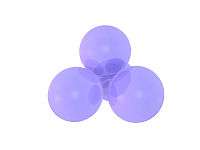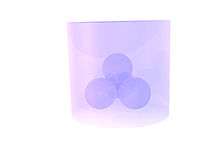Effective stress
Effective stress is a force that keeps a collection of particles rigid. Usually this applies to sand, soil, or gravel.

History
Karl von Terzaghi first proposed the relationship for effective stress in 1925.[1][2][3] For him, the term "effective" meant the calculated stress that was effective in moving soil, or causing displacements. It represents the average stress carried by the soil skeleton.
Description
Effective stress (σ') acting on a soil is calculated from two parameters, total stress (σ) and pore water pressure (u) according to:
Typically, for simple examples
Much like the concept of stress itself, the formula is a construct, for the easier visualization of forces acting on a soil mass, especially simple analysis models for slope stability, involving a slip plane.[4] With these models, it is important to know the total weight of the soil above (including water), and the pore water pressure within the slip plane, assuming it is acting as a confined layer.
However, the formula becomes confusing when considering the true behaviour of the soil particles under different measurable conditions, since none of the parameters are actually independent actors on the particles.

Consider a grouping of round quartz sand grains, piled loosely, in a classic "cannonball" arrangement. As can be seen, there is a contact stress where the spheres actually touch. Pile on more spheres and the contact stresses increase, to the point of causing frictional instability (dynamic friction), and perhaps failure. The independent parameter affecting the contacts (both normal and shear) is the force of the spheres above. This can be calculated by using the overall average density of the spheres and the height of spheres above.

If we then have these spheres in a beaker and add some water, they will begin to float a little depending on their density (buoyancy). With natural soil materials, the effect can be significant, as anyone who has lifted a large rock out of a lake can attest. The contact stress on the spheres decreases as the beaker is filled to the top of the spheres, but then nothing changes if more water is added. Although the water pressure between the spheres (pore water pressure) is increasing, the effective stress remains the same, because the concept of "total stress" includes the weight of all the water above. This is where the equation can become confusing, and the effective stress can be calculated using the buoyant density of the spheres (soil), and the height of the soil above.

The concept of effective stress truly becomes interesting when dealing with non-hydrostatic pore water pressure. Under the conditions of a pore pressure gradient, the ground water flows, according to the permeability equation (Darcy's law). Using our spheres as a model, this is the same as injecting (or withdrawing) water between the spheres. If water is being injected, the seepage force acts to separate the spheres and reduces the effective stress. Thus, the soil mass becomes weaker. If water is being withdrawn, the spheres are forced together and the effective stress increases.[5]
Two extremes of this effect are quicksand, where the groundwater gradient and seepage force act against gravity; and the "sandcastle effect",[6] where the water drainage and capillary action act to strengthen the sand. As well, effective stress plays an important role in slope stability, and other geotechnical engineering and engineering geology problems, such as groundwater-related subsidence.
References
General references
- Terzaghi, K. (1925). Principles of Soil Mechanics. Engineering News-Record, 95(19-27).
Inline citations
- Terzaghi, Karl (1925). Erdbaumechanik auf Bodenphysikalischer Grundlage. F. Deuticke.
- Terzaghi, Karl (1936). "Relation Between Soil Mechanics and Foundation Engineering: Presidential Address". Proceedings, First International Conference on Soil Mechanics and Foundation Engineering, Boston. 3, 13-18.
- Archived June 18, 2006, at the Wayback Machine
- Archived September 2, 2006, at the Wayback Machine
- Archived May 30, 2008, at the Wayback Machine